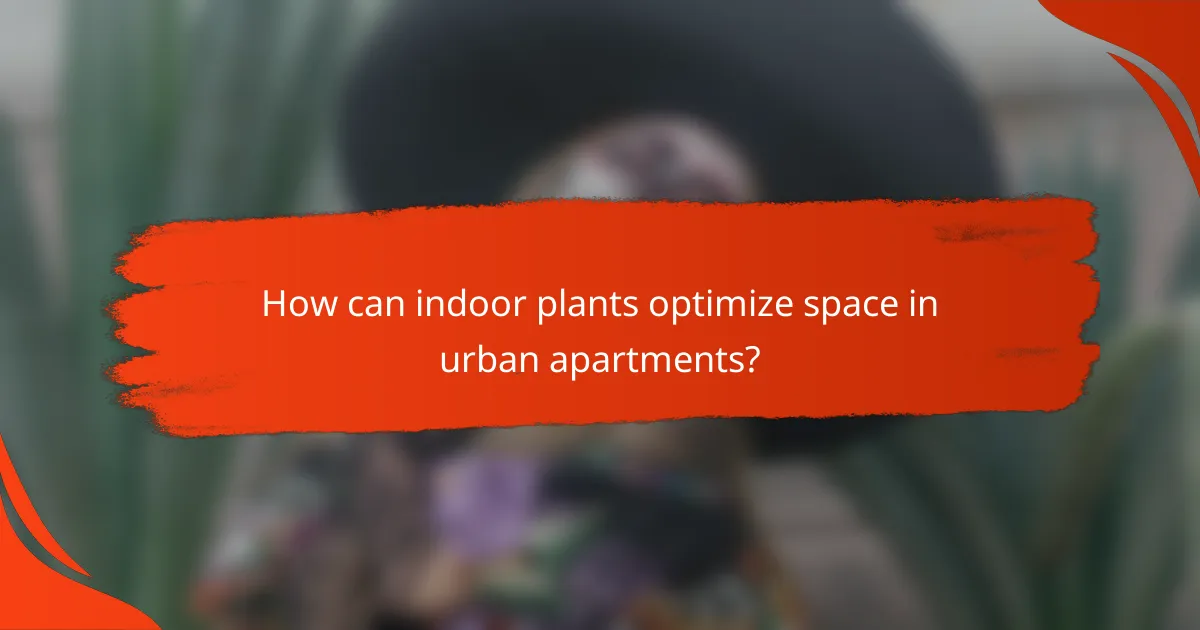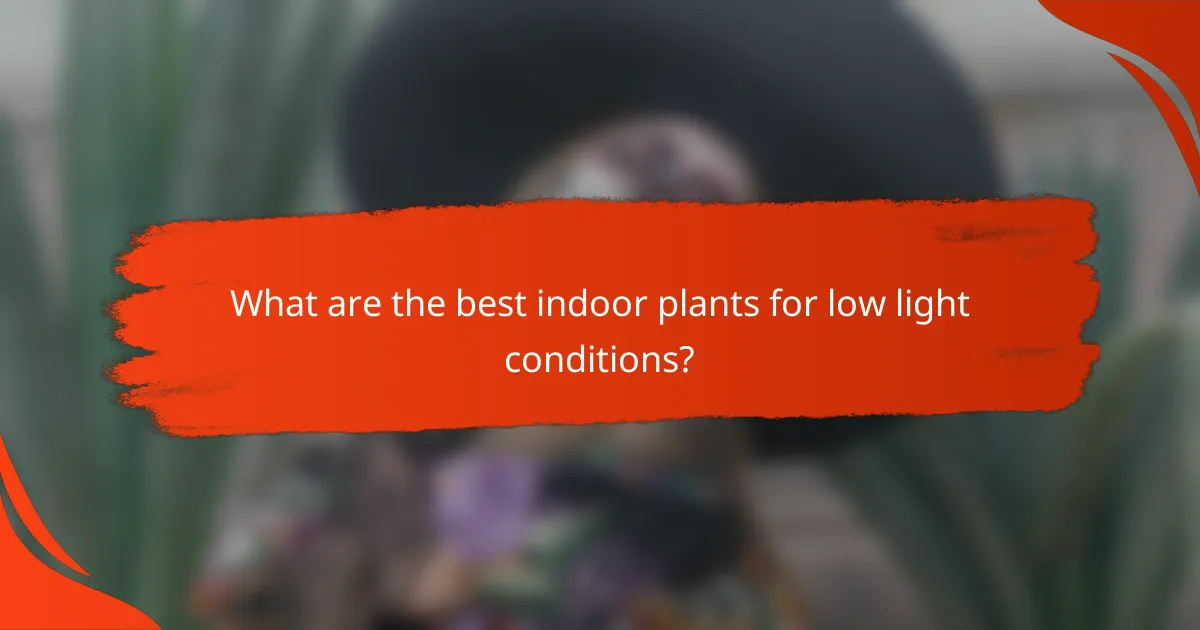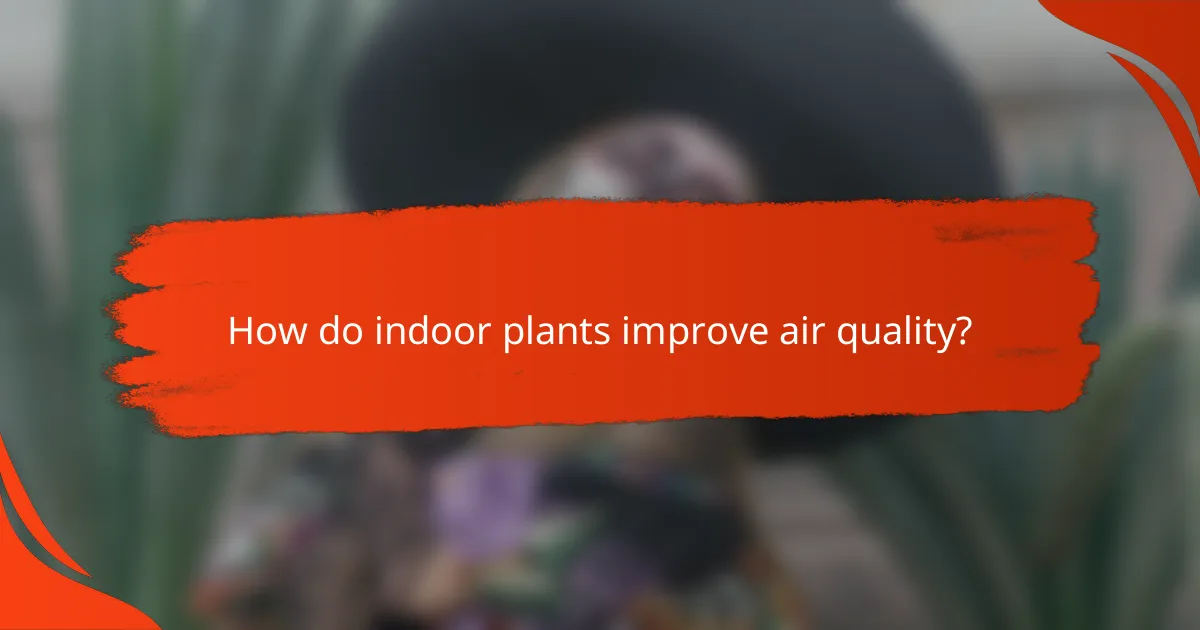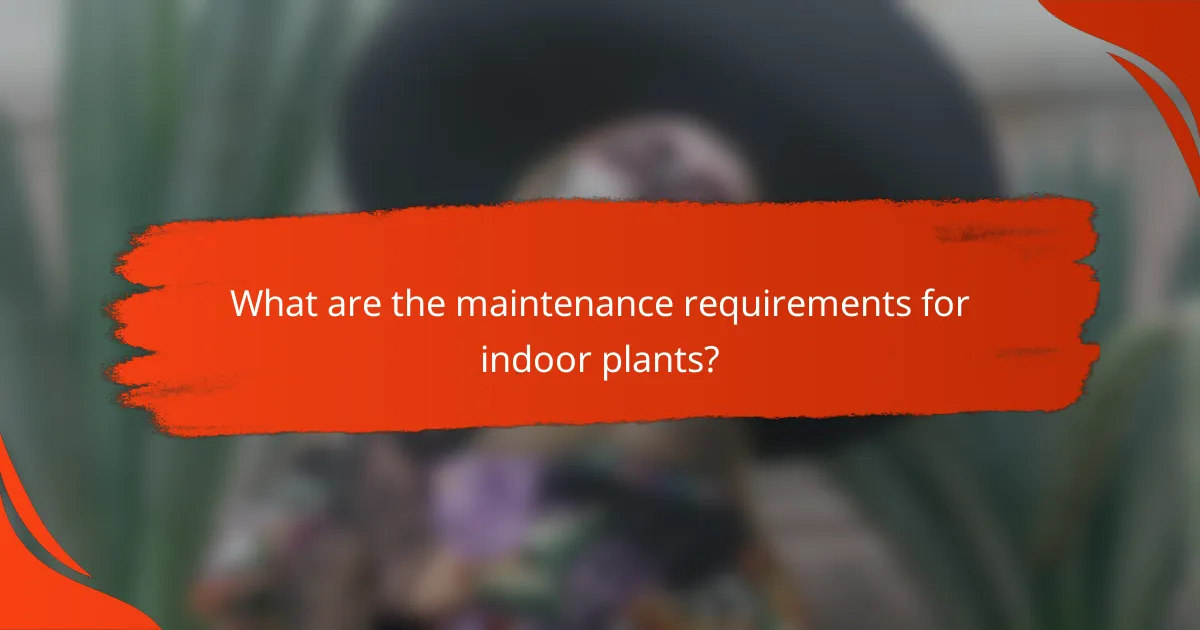Indoor plants are a fantastic way to optimize space in urban apartments, adding both beauty and functionality to small living areas. By selecting compact plants that fit seamlessly into your decor, you can create a vibrant atmosphere that enhances your home’s aesthetic while making the most of limited space.

How can indoor plants optimize space in urban apartments?
Indoor plants can significantly optimize space in urban apartments by enhancing vertical areas and creating a more inviting atmosphere. Utilizing plants effectively can transform small living spaces into vibrant, functional environments.
Vertical gardening solutions
Vertical gardening is an effective way to maximize limited floor space by utilizing walls for plant growth. Options include wall-mounted planters, trellises, and living walls, which can host a variety of plants from herbs to decorative foliage. This approach not only saves space but also adds visual interest to otherwise bare walls.
When considering vertical gardening, ensure the chosen plants are suitable for the light conditions of your space. Plants like pothos, ferns, and succulents thrive in various indoor environments, making them excellent choices for vertical setups.
Space-saving plant arrangements
Space-saving arrangements involve grouping plants in a way that maximizes their aesthetic appeal while minimizing their footprint. Using tiered plant stands or multi-level shelves can help display multiple plants without consuming much floor space. Consider using smaller pots or hanging planters to create a layered effect.
Be mindful of the light requirements of each plant when arranging them. Place taller plants at the back or on higher shelves to ensure that all plants receive adequate sunlight, promoting healthy growth.
Hanging planters for small areas
Hanging planters are ideal for small areas as they draw the eye upward and free up valuable floor space. These planters can be suspended from ceilings, walls, or even window frames, allowing you to incorporate greenery without sacrificing room. Options range from macramé hangers to sleek modern designs.
When selecting hanging planters, choose lightweight materials and ensure they are securely fastened. Consider plants that cascade, such as string of pearls or ivy, to create a lush, flowing effect that enhances the space.
Multi-functional furniture with integrated plants
Multi-functional furniture that incorporates plants can serve dual purposes, maximizing both utility and aesthetics. Examples include coffee tables with built-in planters or bookshelves that feature integrated plant holders. This type of furniture not only saves space but also adds a unique design element to your home.
When choosing multi-functional furniture, look for pieces that are easy to maintain and provide adequate drainage for the plants. This ensures that your indoor garden remains healthy while complementing your living space effectively.

What size indoor plants are best for small spaces?
For small spaces, the best indoor plants are those that are compact and do not require extensive room to grow. Choosing plants that fit well in limited areas while still providing aesthetic appeal is essential for optimizing your space.
Compact plant varieties
Compact plant varieties are specifically bred to thrive in smaller containers and limited spaces. Examples include the Pothos, Snake Plant, and ZZ Plant, which can grow well in small pots and require minimal maintenance. These plants not only save space but also add greenery without overwhelming your environment.
When selecting compact plants, consider their light and water requirements to ensure they thrive in your specific indoor conditions. Look for varieties that can tolerate lower light levels if your space lacks natural sunlight.
Miniature succulents and cacti
Miniature succulents and cacti are ideal for small spaces due to their small size and low water needs. Varieties like Echeveria, Haworthia, and small cacti can fit on windowsills or small shelves, making them perfect for tight areas. They are also available in various shapes and colors, enhancing the visual appeal of your space.
To care for these plants, ensure they receive adequate sunlight and avoid overwatering, as they are susceptible to root rot. Grouping different types together can create an attractive display while maximizing space efficiency.
Small flowering plants
Small flowering plants, such as African Violets, Miniature Roses, and Begonias, can bring vibrant colors to compact areas. These plants typically grow to a manageable size and can bloom throughout the year, adding a lively touch to your indoor environment. They can thrive in pots that are 4 to 6 inches in diameter, making them suitable for small spaces.
When choosing small flowering plants, pay attention to their light and humidity preferences. Many of these plants benefit from bright, indirect light and consistent moisture, so be sure to place them in suitable locations to maximize their growth and flowering potential.

How to aesthetically integrate indoor plants into home decor?
Aesthetically integrating indoor plants into home decor involves selecting plants that complement your existing design elements while enhancing the overall ambiance. Consider factors like color, pot style, and plant size to create a cohesive and inviting space.
Color coordination with interior design
To achieve effective color coordination, choose plants with foliage that matches or contrasts harmoniously with your interior palette. For example, if your decor features warm tones, opt for plants with rich green leaves or variegated colors that include reds or yellows.
Consider the color of the flowers as well; vibrant blooms can serve as accent pieces that draw attention. Use a color wheel to identify complementary shades that will enhance your decor without overwhelming it.
Choosing pots that match home style
Selecting the right pots is crucial for aesthetic integration. If your home features a modern design, sleek ceramic or metallic pots may be ideal, while rustic homes might benefit from terracotta or woven baskets. Ensure the pot’s shape and texture align with your overall style.
Additionally, consider the size of the pots in relation to the plants and the space. Larger pots can act as statement pieces, while smaller ones can be grouped for a layered effect. Avoid mismatched styles that can create visual clutter.
Creating focal points with large plants
Large indoor plants can serve as striking focal points in any room. Position them in areas where they can draw the eye, such as corners, beside furniture, or near windows. Examples include fiddle leaf figs or rubber plants, which can add height and drama.
When using large plants, ensure they are proportionate to the surrounding decor. A single large plant can stand out beautifully, but multiple large plants may overwhelm a small space. Balance is key to maintaining an inviting atmosphere.

What are the best indoor plants for low light conditions?
The best indoor plants for low light conditions are those that thrive with minimal sunlight and can adapt to lower light levels. These plants not only survive but often flourish in shaded areas, making them ideal for homes and offices with limited natural light.
Snake plant
The snake plant, also known as Sansevieria, is a resilient choice for low light environments. It features tall, upright leaves that can tolerate neglect and infrequent watering, making it perfect for busy individuals.
This plant can grow in a variety of conditions, from indirect light to complete shade. It’s best to allow the soil to dry out between waterings, as overwatering can lead to root rot.
Pothos
Pothos, or Epipremnum aureum, is another excellent option for low light spaces. Its trailing vines can adapt to various light conditions, though they prefer indirect light for optimal growth.
This plant is known for its air-purifying qualities and can grow in a range of potting mixes. Regular pruning encourages bushier growth, and it’s important to water when the top inch of soil feels dry to the touch.
ZZ plant
The ZZ plant, or Zamioculcas zamiifolia, is highly tolerant of low light and drought. Its glossy, dark green leaves add a touch of elegance to any indoor space while requiring minimal care.
It thrives in indirect light and can survive in almost complete darkness, making it a great choice for offices or rooms with limited sunlight. Watering should be infrequent, allowing the soil to dry out completely between waterings to prevent overwatering issues.

How do indoor plants improve air quality?
Indoor plants enhance air quality by absorbing pollutants and releasing oxygen. They can filter harmful substances such as formaldehyde, benzene, and trichloroethylene, contributing to a healthier indoor environment.
Air-purifying plant species
Several plant species are particularly effective at purifying indoor air. Common examples include the spider plant, peace lily, and snake plant. These plants not only improve air quality but are also relatively easy to care for, making them ideal for indoor settings.
When selecting air-purifying plants, consider their light and water requirements to ensure they thrive in your space. For instance, snake plants tolerate low light, while peace lilies prefer brighter conditions.
Benefits of increased humidity
Indoor plants can increase humidity levels, which is beneficial for respiratory health and skin hydration. Higher humidity can reduce the likelihood of dry skin and respiratory issues, especially in winter months when indoor air tends to be drier.
To maximize humidity benefits, group plants together or use a humidifier in conjunction with your indoor greenery. This can create a microclimate that supports both plant health and personal comfort.

What are the maintenance requirements for indoor plants?
Indoor plants require regular care to thrive, including appropriate watering, light exposure, and occasional fertilization. Understanding these maintenance needs is essential for ensuring the health and longevity of your plants.
Watering frequency
Watering frequency for indoor plants varies based on species, pot size, and environmental conditions. Generally, most indoor plants need watering every 1 to 2 weeks, but factors like humidity and temperature can influence this schedule.
To determine when to water, check the top inch of soil; if it feels dry, it’s time to water. Overwatering can lead to root rot, so it’s crucial to ensure pots have drainage holes and to empty any excess water from saucers.
As a rule of thumb, tropical plants may prefer more frequent watering, while succulents and cacti require less. Adjust your watering routine based on the specific needs of your plants and the conditions in your home.


